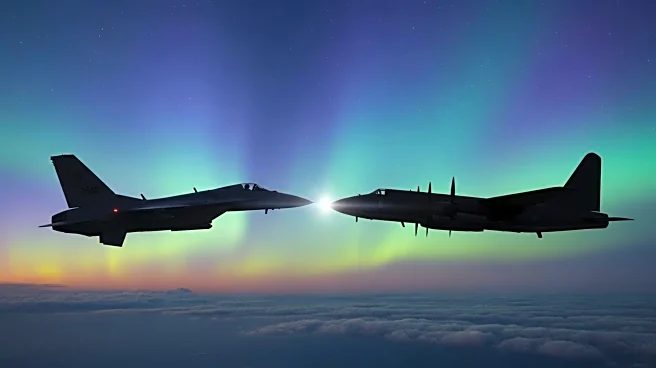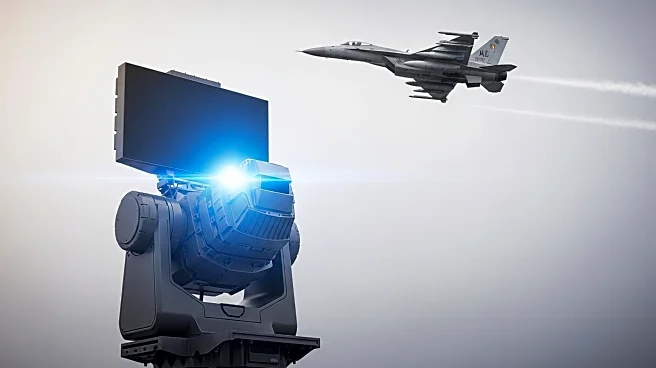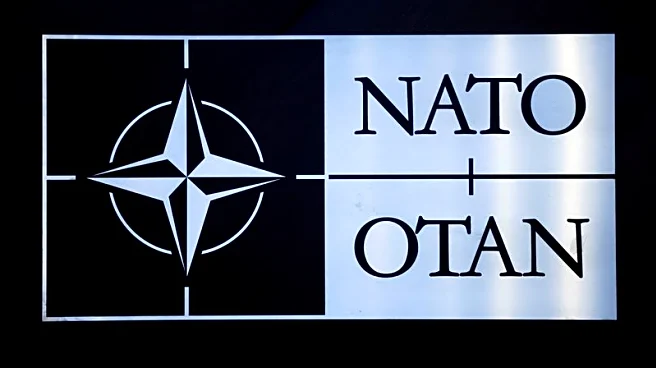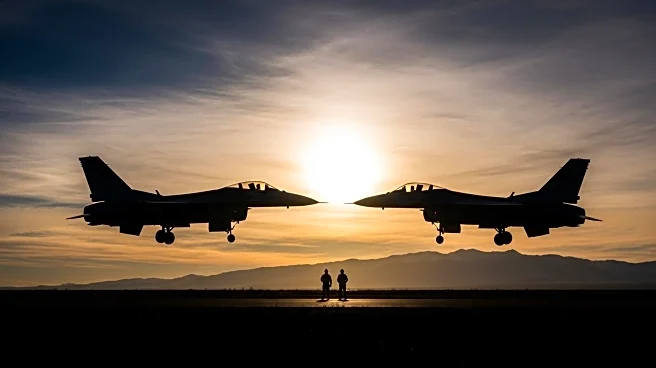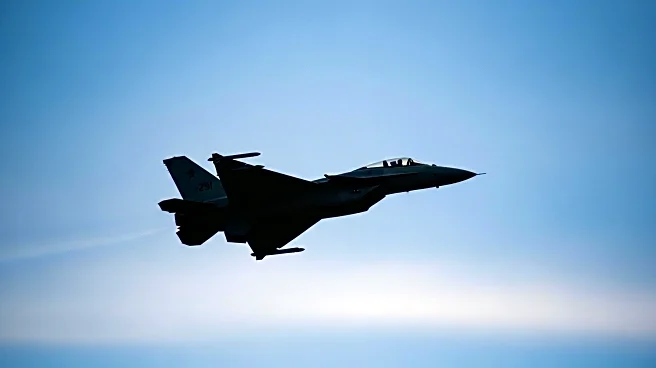What's Happening?
The North American Aerospace Defense Command (NORAD) detected two Russian Tu-95 bombers and two Su-35 fighter jets operating in the Alaskan Air Defense Identification Zone (ADIZ) on Wednesday. The Russian aircraft remained in international airspace and did not enter U.S. or Canadian sovereign airspace. NORAD responded by deploying an E-3 Sentry, four F-16s, and four KC-135 tankers to intercept the Russian planes. This activity is part of a pattern of regular Russian military operations in the ADIZ, which are not considered a direct threat but are closely monitored.
Why It's Important?
The presence of Russian military aircraft near Alaska is a reminder of the ongoing geopolitical tensions between Russia and NATO countries. These incidents are seen as tests of U.S. and NATO readiness and could influence military strategies and defense policies. The situation is further complicated by recent Russian incursions into NATO airspace in Europe, raising security concerns. The U.S. and its allies may need to reassess their defense postures and diplomatic strategies to address these provocations effectively.
What's Next?
The U.S. and NATO are likely to continue monitoring Russian military activities closely, with potential adjustments to defense strategies and readiness levels. Diplomatic efforts may be intensified to address the provocations and prevent escalation. The situation could also impact broader U.S.-Russia relations, influencing negotiations on arms control and regional security. Future incidents may prompt discussions on enhancing air defense capabilities and revisiting engagement protocols with Russia.

